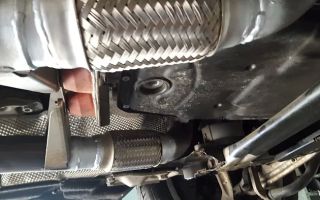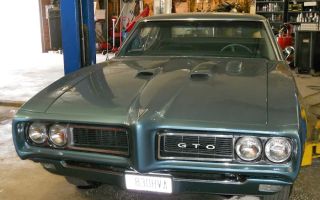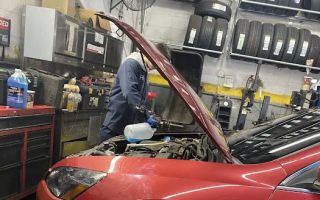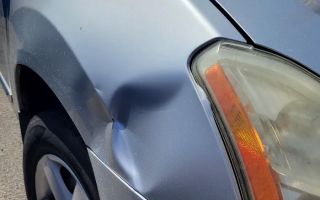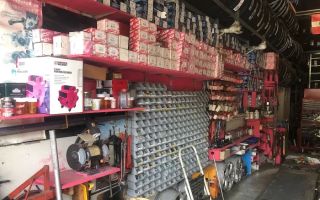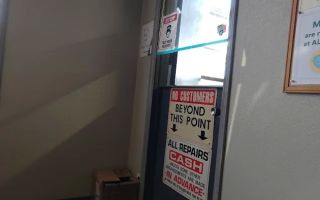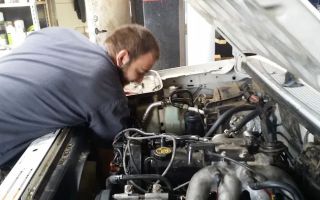How to Fix a Slow Car Battery Discharge: Troubleshooting and Solutions
There's nothing more frustrating than a car that won’t start, especially when you’re in a rush or stranded. A slow car battery discharge is one of the sneakiest culprits behind this problem. Over time, I’ve dealt with this issue myself, and after some trial and error, I've learned how to identify the signs of a slow discharge and what steps to take to fix it. Let me walk you through the process, share some tips, and explain how to fix a slow car battery discharge once and for all.
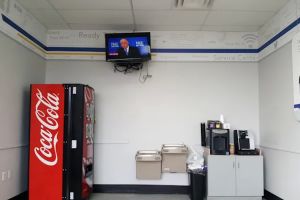
NTB-National Tire & Battery
6315 Prentiss School Dr, Canal Winchester, OH 43110, USA
1. What Causes Slow Car Battery Discharge?
Understanding the root cause of a slow car battery discharge is the first step to fixing it. When I first experienced a slow battery discharge, I wasn’t sure what was going on, so I started by digging into the common causes. Here’s what I learned:

Pep Boys
1200 W Washington Blvd, Los Angeles, CA 90007, USA
1.1 Parasitic Drain
One of the most common reasons for a slow discharge is a parasitic drain. This happens when something in your car continues to use battery power even after the engine is turned off. It’s like your battery is slowly leaking power. When I first encountered this, I couldn’t figure out why my battery was dead again so soon, but I later discovered it was the radio that was drawing power when the car was off. Even small components like the clock, alarm system, or dashboard lights could be the culprits.
1.2 Aging Battery
Another reason for a slow discharge could be the age of your car battery. Batteries have a limited lifespan, typically 3-5 years, and as they age, they lose their ability to hold a charge efficiently. I’ve found that even when a battery is still starting the car, it may not have the same capacity it did when it was new, leading to a slow drain over time. If your battery is approaching the 3-5 year mark, it might be worth considering replacing it before you end up with a completely dead battery.
1.3 Faulty Alternator
The alternator is responsible for charging your car’s battery while the engine is running. If the alternator is malfunctioning, it may not be charging your battery properly, which could lead to a slow discharge. This was actually the issue I faced one winter when I found that my car would start fine but the battery would be drained overnight. After getting the alternator checked, I found that it wasn’t providing enough power to charge the battery, and it was causing a gradual drain.
1.4 Loose or Corroded Battery Terminals
Loose or corroded battery terminals are another potential cause of slow battery discharge. Over time, dirt, moisture, and corrosion can build up around the battery terminals, leading to poor connections. This can cause intermittent charging and slow discharge. I had this problem myself and discovered that the corrosion was preventing the battery from charging properly. A quick cleaning of the terminals fixed the issue, and my battery performance improved dramatically.
2. How to Diagnose a Slow Car Battery Discharge
Diagnosing a slow battery discharge can seem overwhelming, but with a little knowledge, you can pinpoint the issue. When I experienced my first slow discharge, I didn’t want to jump straight to replacing the battery, so I decided to troubleshoot the problem step-by-step. Here’s what I did:
2.1 Check the Battery Voltage
The first thing I did was check the voltage of the battery using a multimeter. A healthy, fully charged battery should read around 12.6 volts when the engine is off. If the voltage is lower than 12.4 volts, it might indicate that the battery is not fully charged or it could be losing charge slowly. I’ve used a digital multimeter for this, and it’s one of the easiest ways to determine whether the battery is the main issue.
2.2 Look for Parasitic Draw
Once I confirmed that the battery was weak, the next step was to look for any parasitic drain. This requires a bit of work, as you need to check if any electronics in your car are drawing power while the engine is off. I used a test light connected to the battery cable, and by pulling out each fuse one at a time, I could identify which component was causing the drain. It was tedious, but I eventually tracked down that my car’s stereo was always on, even after the ignition was off. Fixing this issue solved the slow discharge problem I had been dealing with for weeks.
2.3 Test the Alternator
After I ruled out parasitic draw and confirmed the battery was still underperforming, I tested the alternator. A simple way to check is to start the car and measure the battery voltage again. If the alternator is working correctly, the voltage should rise to around 13.8 to 14.4 volts. I learned the hard way that if your alternator is undercharging, it could be why your battery is discharging slowly. A mechanic can help you test the alternator further if needed, but in my case, I had to replace the faulty alternator to fix the problem.
2.4 Inspect the Battery Terminals
Lastly, I inspected the battery terminals. If they were loose or corroded, it would mean that the battery wasn’t being charged properly. Cleaning the terminals with a battery cleaner and using a wire brush to remove any corrosion helped me restore the proper connection. This is something simple that you can do yourself, and it can sometimes make a huge difference. I’ve had times when just cleaning the terminals solved the issue entirely.
3. Fixing the Slow Discharge: Solutions That Worked for Me
Once I diagnosed the issue, I took the necessary steps to fix the slow car battery discharge. Here are the solutions that worked for me and might work for you as well:
3.1 Replace the Battery
If your battery is old and struggling to hold a charge, the best solution might be to replace it entirely. I’ve done this a few times, and I’ve found that a high-quality battery can often solve many slow discharge issues. Make sure you choose a battery with the right specifications for your car, and it’s always a good idea to invest in a battery that offers a longer lifespan.
3.2 Fix the Parasitic Drain
After discovering that my stereo was causing a parasitic drain, I had it serviced so that it would turn off automatically when the ignition was off. Depending on the source of the parasitic drain, you may need to repair or replace the faulty component. I recommend checking all your electrical systems carefully and getting them fixed to ensure they’re not draining the battery.
3.3 Replace the Alternator
If your alternator is underperforming and failing to charge the battery properly, you’ll need to replace it. A mechanic can help with this, and I’ve found that getting the alternator replaced has been the most reliable way to ensure my battery is always charged. A properly functioning alternator prevents slow discharges and extends the life of your battery.
3.4 Clean the Battery Terminals
If your battery terminals are corroded or loose, cleaning them can improve the charge flow. I’ve cleaned my battery terminals using a mixture of baking soda and water, followed by a thorough scrubbing with a wire brush. It’s a simple fix that often restores battery power and prevents further issues.
4. Preventing Future Slow Discharge Issues
After fixing the slow battery discharge problem, I took steps to prevent it from happening again. Regular maintenance and checks can help ensure that your car battery stays healthy for longer. Here’s what I do to prevent slow discharge issues:
4.1 Regularly Check the Battery Voltage
I regularly check my battery voltage to ensure it’s holding a charge properly. It’s a quick check that can save you from unexpected problems. I always make sure my battery reads 12.6 volts when the engine is off.
4.2 Maintain Your Electrical System
Keeping your electrical system in good shape is key to preventing slow discharge issues. I make sure to have my alternator and other electrical components tested during routine maintenance to avoid surprises.
4.3 Replace the Battery Every Few Years
As mentioned earlier, replacing the battery every 3-5 years is a good preventive measure. I’ve found that replacing the battery before it becomes too weak can save me from many headaches down the road.




